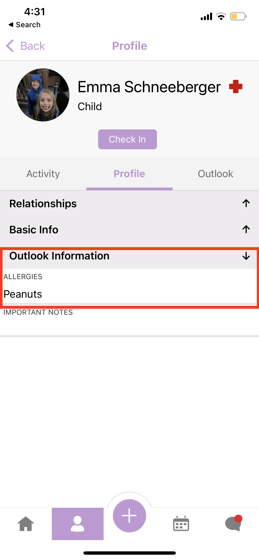Are you hungry for amazing child nutrition tips? 😋
Feeding infants can be a challenge for many childcare providers because they have unique nutritional needs that require careful attention.
That's why the Child and Adult Care Food Program (CACFP) is so important! It provides funding and support to childcare providers to ensure that infants in their care receive nutritious and balanced meals that meet their dietary needs.
In this blog, we'll dive into exactly what the CACFP subsidy is. Along the way, you’ll learn some amazing nutrition tips for infants that will help you provide delicious and healthy meals for your little ones.
Ready to digest this helpful info? ✍️
What is CACFP?
CACFP stands for Child and Adult Care Food Program, which is a federal program that provides funding and support to childcare providers, including those who care for infants. The program's goal is to ensure that children in childcare settings have access to balanced meals that meet their dietary needs.
CACFP for infants is an important program because it provides funding and support for childcare providers to offer nutritious meals and snacks to infants in their care.
Infants have specific nutritional needs that differ from older children and adults, so it's important to offer them foods that meet those needs. For example, infants require more fat and protein than adults, and they need a steady supply of nutrients to support their growth and development.
What are the benefits of the CACFP for childcare centers?
By participating in the CACFP, childcare providers can offer meals and snacks that are specifically designed to meet the dietary needs of infants.
This can help ensure that infants are getting the right balance of nutrients, which can help support their growth and development. It can also help instill healthy eating habits at an early age, which can have lifelong benefits.
In addition to providing nutritious meals and snacks, the CACFP can also help reduce food insecurity among families with young children. Many families struggle to provide enough food for their children, and the program can help ensure that infants in childcare settings have access to nutritious meals and snacks throughout the day.
8 helpful nutrition tips for infants
- Tip #1: Introduce new foods gradually. Introducing new foods to infants can be tricky, as they may not be used to the taste or texture. That's why it's important to introduce new foods gradually. Start with a small amount and slowly increase the portion size over time. This will allow infants to get used to the new taste and texture and reduce the risk of rejection.
We talked to our lovely customers at Phoenix Children’s Center and they had this piece of advice about nutrition:
“We actually incorporated a new food for thoughts menu into our weekly menu. April is a full month dedicated to nutrition. We’re always talking about healthy options within the classroom. We incorporate healthy foods into their day and encourage them to try new things!”
- Tip #2: Offer a variety of foods. Offering a variety of foods is important to ensure that infants receive all the nutrients they need to grow and develop. Try to offer a range of fruits, vegetables, grains, and proteins. Don't be afraid to get creative with your recipes! You can add pureed vegetables to sauces, mix fruits into cereals, and even blend proteins into smoothies.
- Tip #3: Encourage self-feeding. Encouraging self-feeding is important to help infants develop their fine motor skills and promote independence. Offer small finger foods, such as pieces of cooked vegetables, fruits, and soft meats, and let infants practice picking up the food and bringing it to their mouths. You can also offer spoons and let infants try to feed themselves.
- Tip #4: Watch for signs of hunger and fullness. Infants have small stomachs, so it's important to watch for signs of hunger and fullness. Infants may show signs of hunger by rooting, sucking, or smacking their lips. On the other hand, they may show signs of fullness by turning their head away, pushing away the food, or becoming fussy. Paying attention to these cues will help you determine when to offer food and when to stop.
- Tip #5: Make mealtime fun. Mealtime should be a fun and enjoyable experience for infants. Sing songs, play games, and make silly faces to keep them entertained. You can also involve them in the meal preparation process by letting them help with simple tasks, such as stirring or pouring. This will help them develop an appreciation for food and encourage them to try new things.
- Tip #6: Don't forget about hydration. Infants need to stay hydrated, especially during hot weather. Offer water or breast milk/formula throughout the day to keep them hydrated. You can also offer pureed fruits or vegetables with a high water content, such as watermelon or cucumber.
- Tip #7: Be mindful of food allergies. Food allergies are becoming more common, so it's important to be mindful of the foods you offer to infants. Common food allergens include milk, eggs, peanuts, tree nuts, fish, shellfish, soy, and wheat. Be sure to check with parents to see if their child has any food allergies or intolerances and avoid offering those foods.
To really ensure allergy information is up to date – keep a detailed record of each child’s allergies. Unfortunately, maintaining this on pen and paper is chaotic, stressful, and hard to manage. Thankfully LineLeader Engage makes it easy to input a child’s allergy information! With the click of a button, save allergy data and save countless hours of manual administrative work.

Allergy info: LineLeader Engage
- Tip #8: Stay organized Staying organized is important to ensure that infants receive the proper nutrition they need. Keep a record of the foods offered and when and make note of any reactions or preferences. This will help you plan future meals and ensure that infants receive a variety of foods.
How to get started with the CACFP program
To get started with a CACFP program, you will need to contact your state's CACFP agency. You can find the contact information for your state's CACFP agency on the USDA's CACFP website. Once you have contacted your state's CACFP agency, they will be able to provide you with more information about the program and how to apply.
The following are the steps on how to get started with a CACFP program:
- Contact your state's CACFP agency.
- Gather the required documentation.
- Complete the application form.
- Submit the application form to your state's CACFP agency.
- Be approved by your state's CACFP agency.
- Begin serving meals and snacks to eligible participants.
- Be reimbursed by your state's CACFP agency.
- The required documentation may vary from state to state, but typically includes the following:
- A copy of your childcare center's or daycare home's license or registration.
- A copy of your tax identification number.
- A copy of your insurance certificate.
- A copy of your menu.
- A copy of your food safety plan.
Once you have completed the application form, you will need to submit it to your state's CACFP agency. Your state's CACFP agency will review your application and notify you of their decision.
Better nutrition, healthier infants, happier families.
Feeding infants can be a challenge, but with these tips, you'll be able to provide nutritious and delicious meals. Remember to introduce new foods gradually, offer a variety of foods, and keep track of food allergies!
Not a User Yet?
Learn more about LineLeader to make providing effective nutrition an easy part of your day. 👈
Want more tips?
Follow us on social media to stay up to date with industry advice! 👇
Additional Blog Resources
- Learn how to create a positive classroom environment.
- Effectively ask your boss for new childcare technology.
- Discover how to get the resources you need from your center director.
- Need fresh ideas? Check out our extensive list of engaging summer enrichment activities.
- See exactly how to support emotional intelligence in children.
- Identify which modern resources educators need (and how to ask for them)!
- Understand effective ways to transform challenging behaviors in the classroom.
- Embrace inclusivity and diversity in education by taking a look at ways to celebrate pride month 2023.




